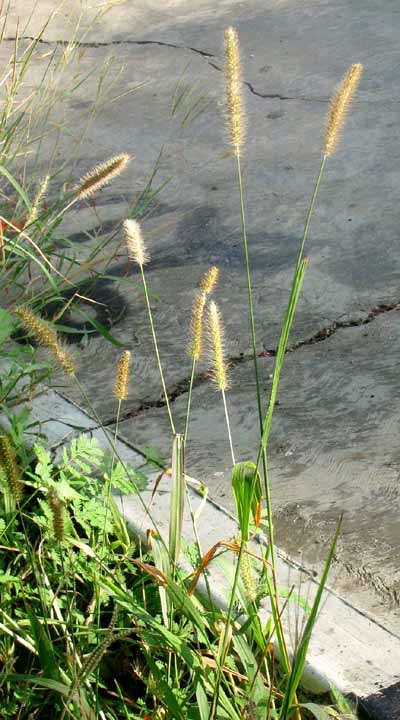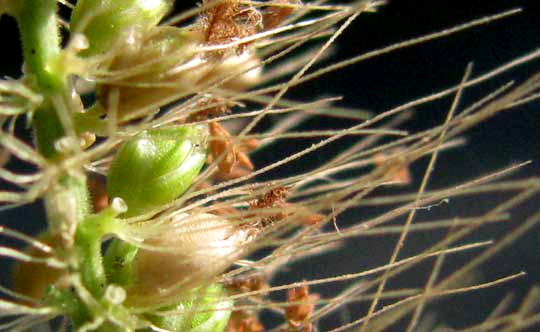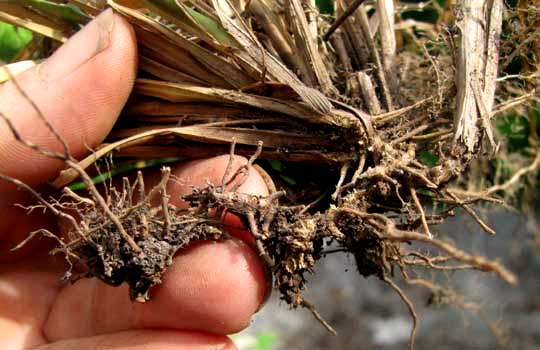Excerpts from Jim Conrad's
Naturalist Newsletter
from the June 20, 2010 Newsletter issued from Hacienda Chichen Resort beside Chichén Itzá Ruins, central Yucatán, MÉXICO; limestone bedrock, elevation ~39m (~128ft), ~N20.676°, ~W88.569°
FOXTAIL GRASS

Though no trees, bushes, vines or wildflowers found here are species that also occur in my usual haunts up North, some weeds here are indeed the same species. Other weeds look more or less the same, but they turn out to be different species. Therefore, with weeds I'm seldom sure whether I'm seeing an old acquaintance or something entirely new for me. I just have to go through the identification process and see if I end up with a species known to occur in the US.
The other day as I hiked to Pisté to buy fruit, at the edge of the concrete sidewalk connecting Pisté and the ruins' entrance, I saw some foxtail grass that looked like a species I knew back in the US Southeast. Foxtail grass, genus Setaria, is an easy-to-recognize grass genus because its tiny flowers are arranged in spike-like panicles (the "fox tails") atop the grass's stem. Also, long, stiff, hairlike bristles arise below each foxtail flower. Several foxtails beside the sidewalk between Pisté and the ruins are shown above.

Above a close-up shows individual, egg-shaped flowers along one side of a foxtail's spike-like panicle. Each ovate flower is topped by the dry, brown remnants of old, feathery stigmas and anthers. The lowest flower is pale straw-color because it's mature and ready to fall off. At the lower left notice the small peglike items, like thick-based golf Tees. The pale, round surfaces are scars from other mature flowers that already have fallen off their flower stems, or pedicels. Below one such pedicel scar you can see that maybe eight stiff, hairlike bristles arise.
When you identify foxtail grasses you need to count the bristles because bristle number per flower varies from species to species. Also, some foxtails are annual with fibrous roots while others are perennials with rhizomes. Ours have rhizomes with curiously knotty nodes along the length, as shown below:

So, eight or so bristles per flower, a shortish inflorescence about two inches long (5 cm), and being a perennial with a knotty rhizome -- that makes this Perennial Foxtail-grass, SETARIA PARVIFLORA, sometimes also known as Setaria geniculata. It's common in many places and goes by several English names, especially Yellow Foxtail, Perennial Foxtail and Knotroot Bristle Grass. It grows in marshes, ditches, moist disturbed areas and the like in much of the world, especially the tropics, where it's a weed. Apparently it's native here.
So, in this case the weed looked familiar because I've run across it up North. Next time I hike to Pisté for bananas I'll give it the nod due an old acquaintance.